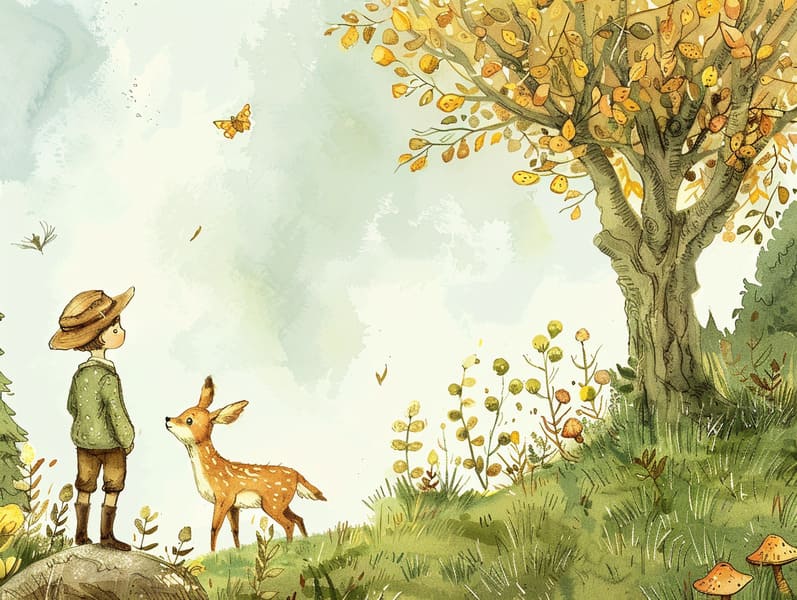The Story Behind Grimm's Fairy Tales with Their Endless Splendor.
The Story Behind Grimm's Fairy Tales with Their Endless Splendor.
Blog Article

Ancient fairy tales have long histories. These tales have been recounted from one generation to the next ages before they were ever documented. They sprang from a variety of societies, including Eastern traditions. They were initially conveyed among grown-ups, often carrying themes and messages reflective of the societal norms and beliefs of the time.
The Grimm brothers, Jacob and Wilhelm (the Grimm brothers), were among the first to gather many of these beloved stories. Their volume, "Grimm's Fables," included classics like "The Story of Cinderella," "The Story of Hansel and Gretel," and "Schneewittchen," which have since become mainstays in the world of children's fairy tales. Similarly, Hans Christian Andersen's fantastical narratives, such as "The Sea Maid," and "The Story of the Ugly Duckling," have touched hearts worldwide, establishing their place in the pantheon of treasured fairy tales.
Even though they are old, traditional fairy tales remain as significant as ever, especially as children's bedtime stories. These delightful tales are now available in various formats, including colorful picture books, captivating animations, and online storybooks.
Their continued relevance can be linked to several charming aspects:
Life Lessons: Traditional fairy tales often provide important moral lessons. Fairy tales like "The Boy Who Cried Wolf" teach the virtue of being truthful, while "The Hare and the Tortoise" highlight the values of steadfastness and humbleness. These tales offer the young clear distinctions between correct and incorrect, guiding their moral compass in a kind yet deep way.
Empathy and Awareness: Traditional fairy tales frequently showcase individuals facing problems and hurdles, urging young readers to resonate with their struggles and champion their triumphs. For instance, "The Story of Beauty and the Beast" conveys the merit of seeing inner beauty to comprehend the true character of a being, building sympathy and recognition.
Cultural Awareness: Many timeless fairy tales are deeply ingrained in the cultural contexts from which they sprang. Understanding these stories can provide captivating looks into different ways of life, fostering a sense of world understanding and recognition.
Inventiveness and Fantasy: The fanciful elements in timeless fairy tales—magical kingdoms—inspire children’s imaginative ideas. These tales move readers to fantastical realms, invigorating imaginative thinking and a sense of magic that stays a lifetime.
Traditional fairy tales are not only whimsical but also pedagogical. They work as mesmerizing tools in promoting various mind and heart abilities in kids. When fairy tales are voiced, they promote language skills by offering new language and sophisticated sentence structures. This practice also develops auditory perception and attentiveness, as the young check here listen intently, anticipating to see what happens next.
Furthermore, deliberating the themes and characters of traditional fairy tales can promote logical thinking and problem-solving abilities. Young readers learn to discern patterns, expect results, and comprehend cause and effect. These discussions also aid young ones utter their thoughts and feelings, promoting their emotional intelligence.
In today’s information age, the abundance of online storybooks has made these stories more acquirable than ever. Websites and web apps supply ample collections of traditional fairy tales that can be enjoyed or heard anytime, anywhere. Fairy tales narrated are particularly well-received, making available an immersive method for young readers to experience these whimsical stories. Narrated books and read-to-me stories guide characters and settings to life, often supplemented by enchanting musical scores and soundtracks that elevate the storytelling experience.
The timeless allure of classic fairy tales lies in their ability to adapt to modern days while keeping their core messages. Contemporary renditions of these narratives often showcase more diverse characters and modern settings, making them familiar to today’s audience. However, the main ideas of braveness, compassion, and lawfulness remain unchanged, continuing to strike a chord with listeners of all ages.
Timeless fairy tales also offer a sense of familiarity and familiarity. They render a systematic narrative with a apparent beginning, middle, and end, often wrapping up with the ending of conflicts and the triumph of honesty over deceit. This uniformity can be relieving for young ones, extending a sense of security in an inconstant world.
Timeless fairy tales continue to entrance and inform new generations, maintaining their allure and value in modern society. As kids' bedtime tales, they bestow a perfect blend of fantasy and learning, promoting moral values, empathy, and creativity. The accessibility of internet fairy tales and the well-liked nature of fairy tales recited validate that these timeless fairy tales remain reachable to new generations.
By keeping and communicating these stories, we continue to acknowledge the rich tapestry of cultural heritage and cultural heritage. Whether you are exploring a colorful picture book, viewing a internet collection, or playing an sound book, the majesty of Grimm's fairy tales is always within reach. These fairy tales highlight of the invariable essence of tales and its ability to gather us across epochs and places.
Regardless if you are accessing a artistically illustrated book, enjoying a digital library, or listening via an spoken story, the majesty of famous fairy tales is always within reach.
These tales remind us of the perpetual strength of tales and its ability to bond us across eras and regions, making a tie that captivates and teaches alike.